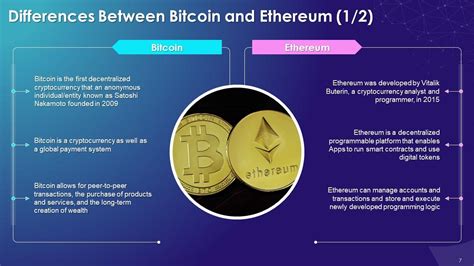CRYPTOCURRENCY
Ethereum: What does a segregated witness transaction look like?
segregated witness: Deep diving into Ethereum transactions
As we deepen in the intricacies of Ethereum’s block structure, a concept stands out as a particularly captivating: A separate witness (SW). In this article, we will explore what a SW transaction looks like and how it works on the Ethereum network.
Current transaction structure
Ethereum’s typical transaction consists of several components:
- Version : The Byte massif that determines the type of transaction (eg 0x01 for normal transaction).
- Inputcount : Citra, which shows the number of input parameters.
- [TXID] : The previous block identification number.
- …
Segregated witness transaction structure
The SW transaction is similar to an ordinary Ethereum transaction, but with a key difference:
- Instead of store all input in one byte massif, each input parameter is stored separately.
- Each input parameter is a prefix with a byte
0x01(prefix Segwit).
- The transaction also includes additional metadata, such as the public keys of the sender and the receiver.
Here’s an example of a SW transaction:
`
Version | 0x01 | [txid] …
^^ ^
| 0x1a | [Inputparam1]
| 0x1e | [Inputparam2]
Version | 0x02 | [txid] …
^^ ^
| 0x19 | [Inputparam3]
`
As you can see, each input parameter is re -refined with the prefix 0x01 segwit and followed by the relevant public key. This allows for more effective storage of input and reduces the risk of key collisions.
How does the segregated witness work
When the user sends a SW transaction to the Ethereum network, it is checked by the network nodes using the following steps:
- Transaction transactions : The sender’s public key and the public key of the receiver shall be retrieved from the transaction.
- Extract of the input parameter : Each input parameter is identified and retrieves its corresponding public key.
- Removal of prefix
: Prefix
0x01Segwit is removed, revealing the raw input data.
- Verification : The received input data shall be checked by the network nodes using the Merkle tree or other mechanisms for checking based on the hash.
Benefits of a separate witness
The segregated witness offers several advantages:
* Effective storage : Each input parameter can be stored independently, reducing the use of memory and improving scalability.
* Improved security

: Reduced key clashes and increased accident in input data make SW more secure.
* Improved performance : Faster transaction processing times are achieved due to the reduced overhead check costs of each input parameter.
In conclusion, the segregated witness is a powerful concept that increases the efficiency, security and implementation of Ethereum transactions. Understanding how SW works, we can better appreciate the intricacies of the Ethereum network and explore its potential to improve the overall user experience.


Bài viết liên quan
Understanding The Dynamics Of Trading Ethereum Classic (ETC) And NFTs
Understanding the Dynamics of Trading Ethereum Classic (etc) and Non-Fungible Tokens (NFTS) Cryptocurrency has become a buzzword in the financial world, with many investors flocking to trade digital currencies like...
Identifying Reversal Patterns For Better Trading Outcomes
Identification of inverted models to best trading results in cryptocurrency The world of cryptocurrency trading is known for its high volatility and unpredictable market fluctuations. As a result, investors and...
The Role Of Tokens In Decentralised Finance
Role of chips in decentralized finances (Defi): Financial Future Revolution In recent years, the world has changed significantly in the financial environment. Traditional institutions and mediators have been replaced by...
How Governance Tokens Shape The Future Of Ethereum (ETH)
* Growth of Man Management Tokes and Their Edfecacts of Etreum * In Recentration, The Cyptocurrrency World Has Has Signly Changed the Management Has Been Structred. Traditional Centrolized systems ya...
How Decentralized Finance Is Reshaping Tokenomics
Cryptocurrency and increasing decentralized financing (Defi): How to develop tokenomics In recent years, the world of cryptocurrencies has undergone a significant transformation that is due to the increase of decentralized...
How To Secure Your Investments In Binance Coin (BNB) With 2FA
Secure your cryptocurrency investments with two factors on Binance Coin (BNB) The world of cryptocurrencies has experienced rapid growth and adoption in recent years, making it a popular choice for...
Understanding Market Depth And Its Effects On Trading: A Study On Chainlink (LINK)
Here is a comprehensive article about understanding the depth of the market and its effects on the trade, including a study on Chainlink (Link): Understanding of the market depth and...
The Benefits Of Multichain Strategies In DeFi
Here is a more detailed analysis of the benefits of Multichain strategy in DEFI: What are Multichain strategies? Multichain strategies include the use of many chains (e.g. Ethereum, Solana, Binance...
How To Create A Risk Management Plan For Crypto Trading
Creating a Risk Management Plan for Cryptocurrency Trading The world of cryptocurrency has come a long way since its inception in 2009. With the rise of new technologies and increasing...
Futures Expiration: Strategies For Successful Trading
**Futures Expiration: The Strategies Form. The world off crypto currency trading can be volitile and unpredictable. With the rice off cryptocurrencies such as Bitcoin, Ethereum, and others, the market has...
Understanding Price Action: A Focus On Dogecoin (DOGE)
Understand the price campaign: an approach in Dogecoin (Doge) The world of cryptocurrency has become increasingly complex and volatile in recent years, and prices fluctuate quickly in online exchanges. An...
The Importance Of Community Engagement In Crypto Projects
Here is a break in the importation of community engagement in cryptography projects: What is a community commitment crucial Participation of pre-sale : Many projects holde presale their official bill,...